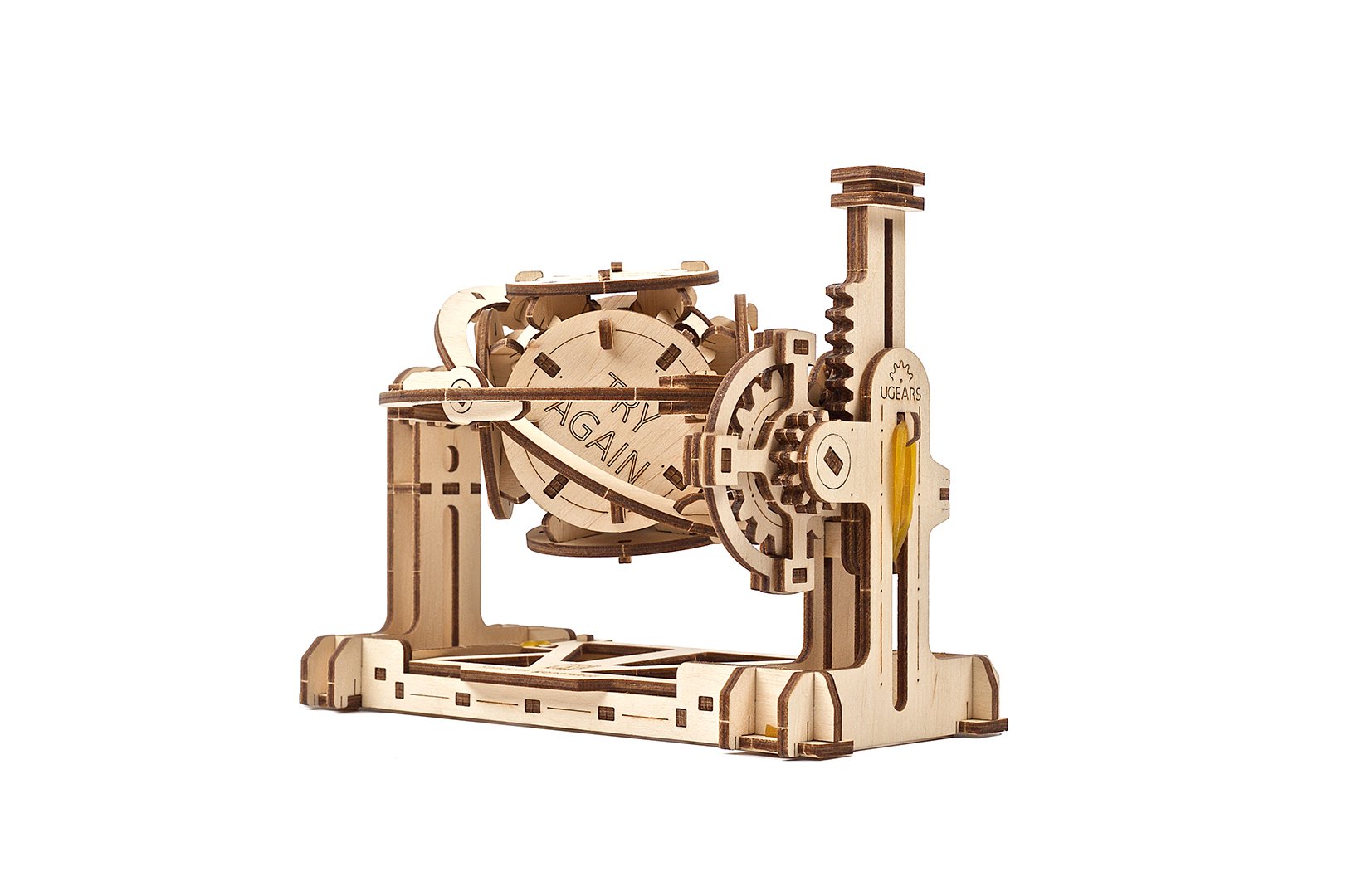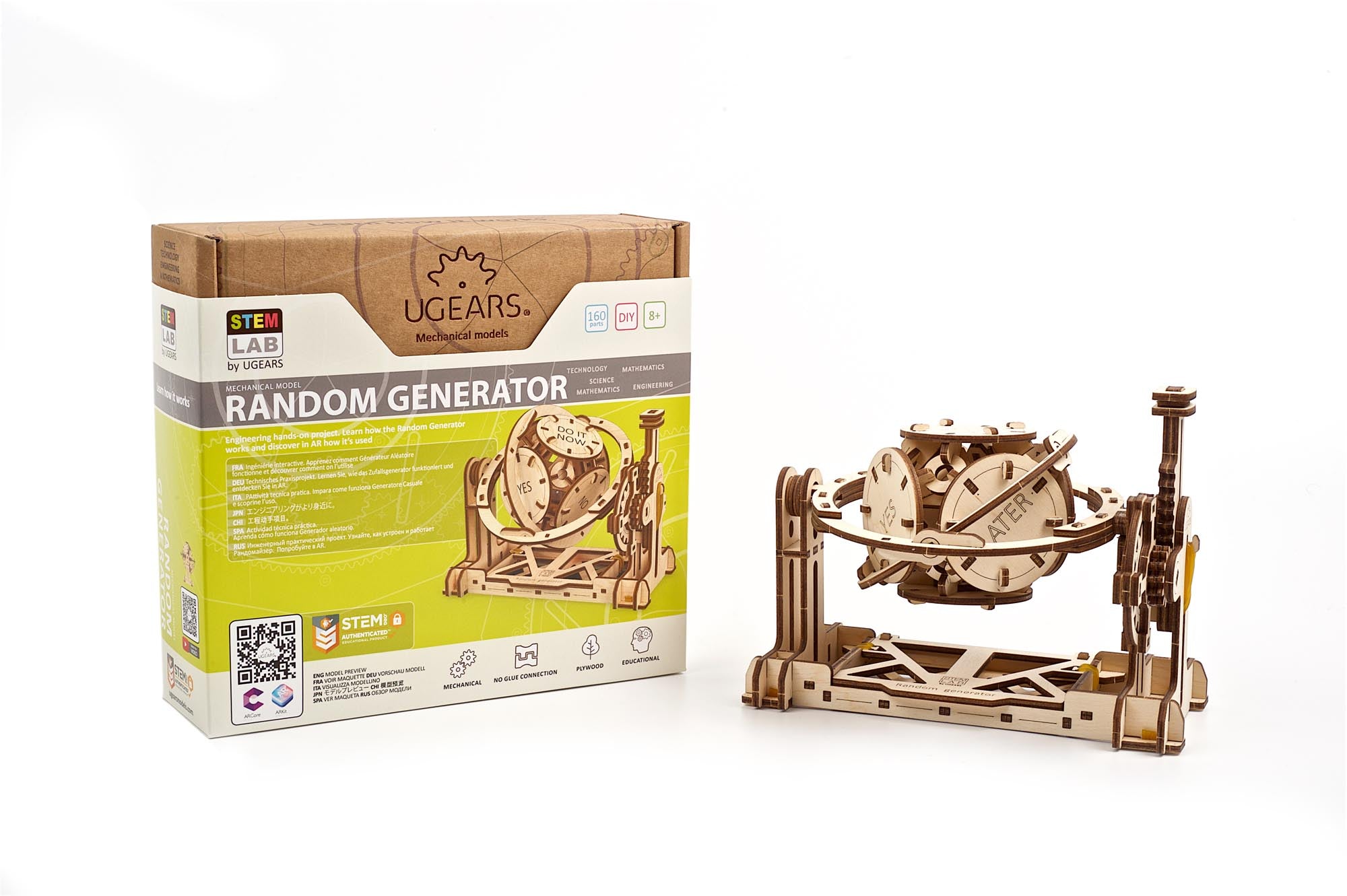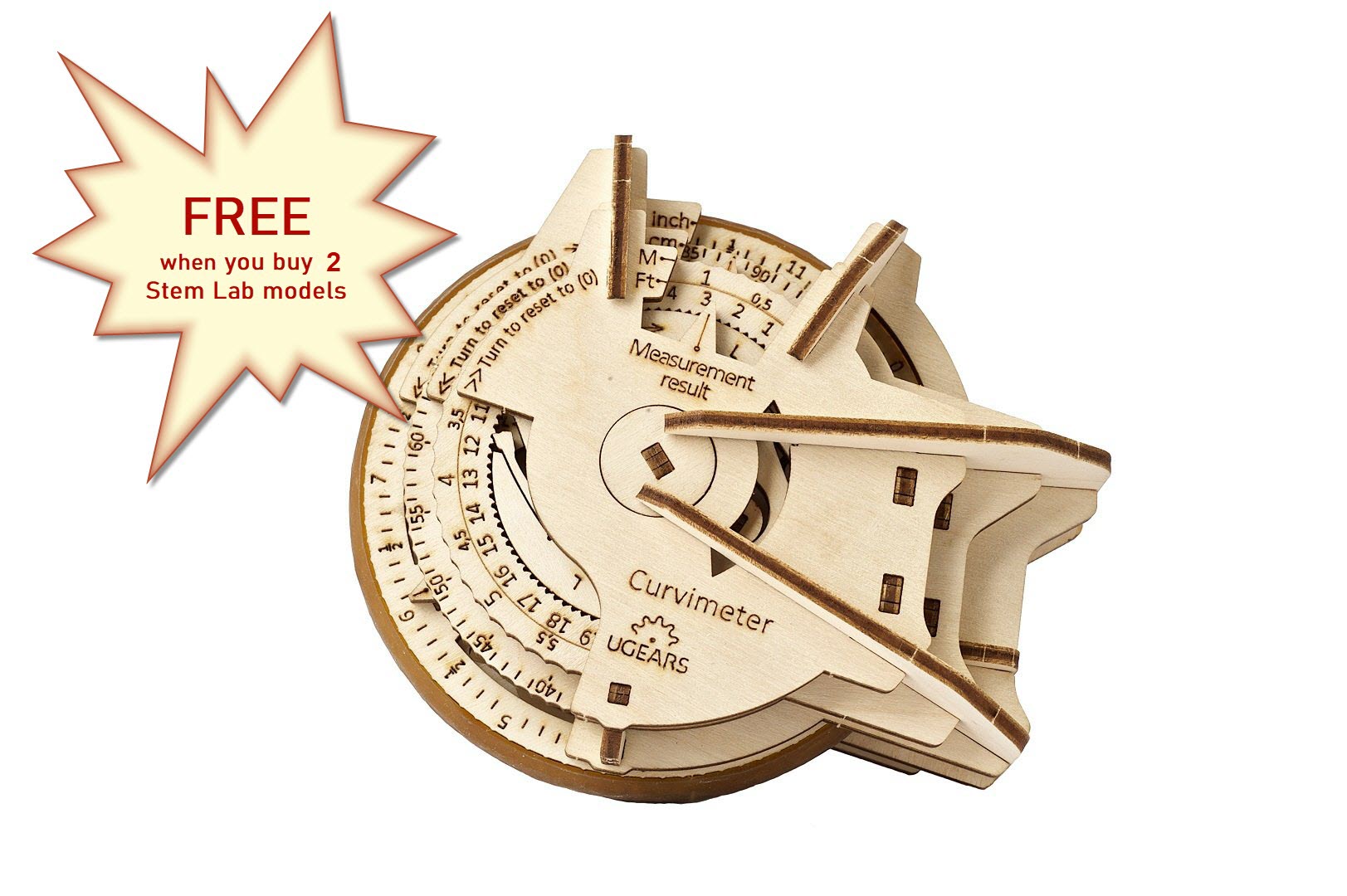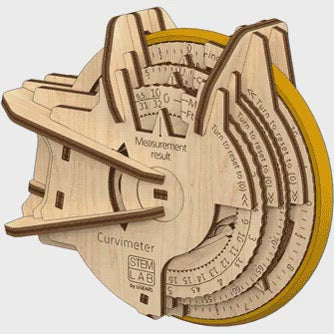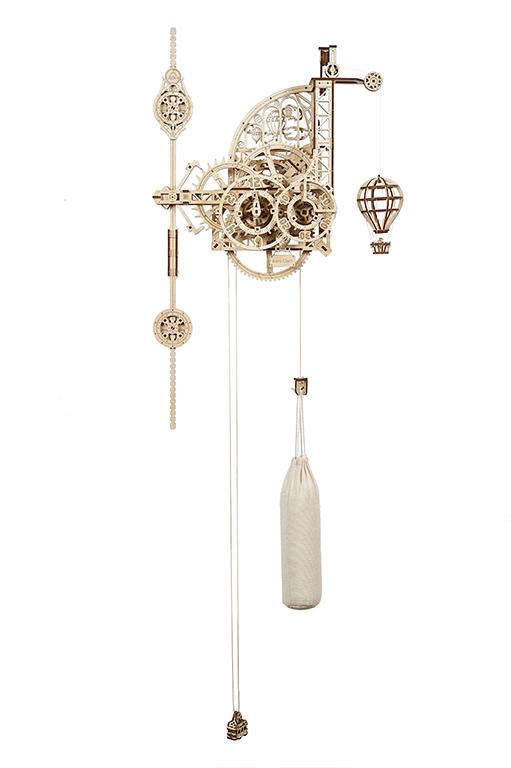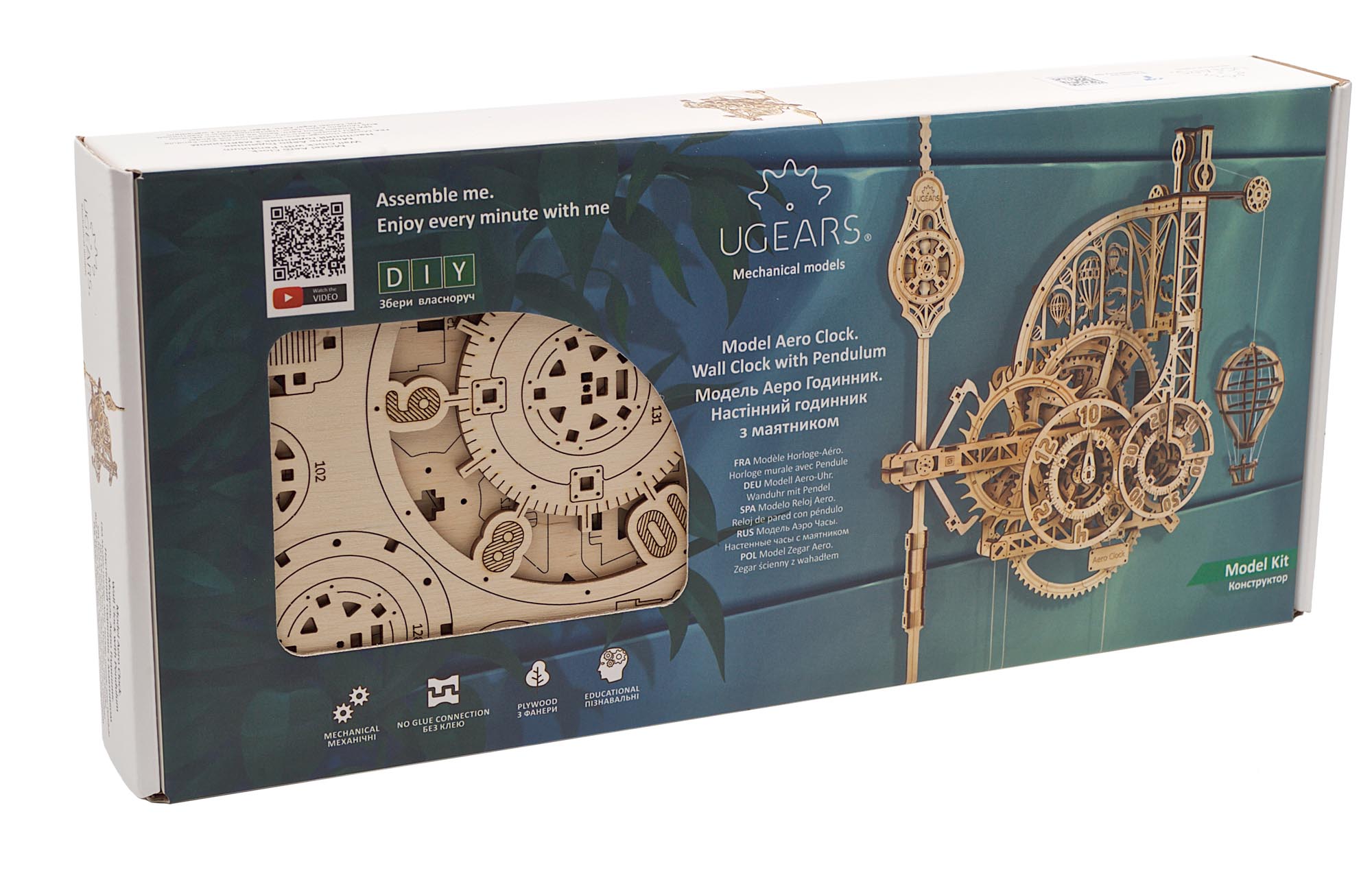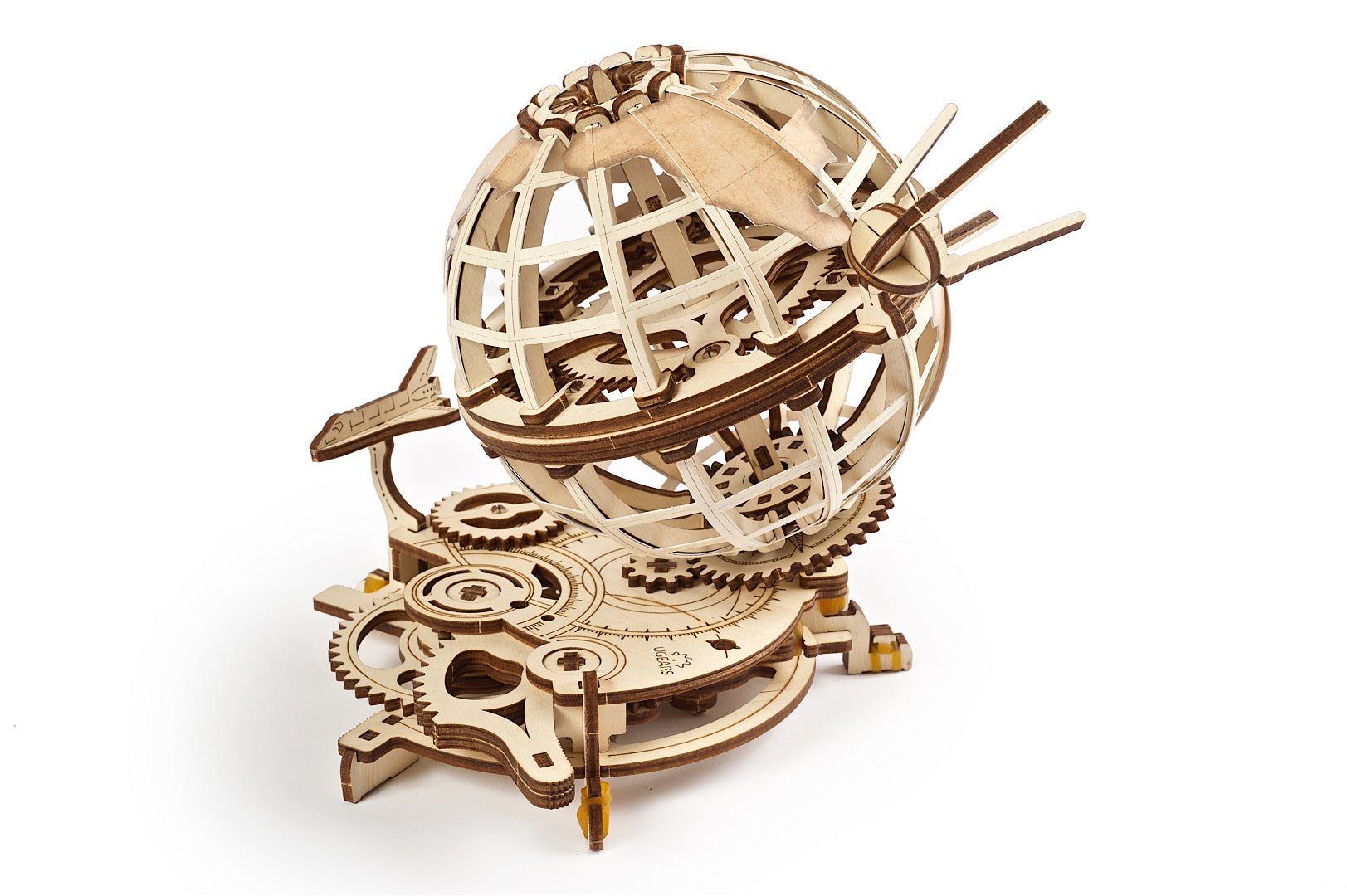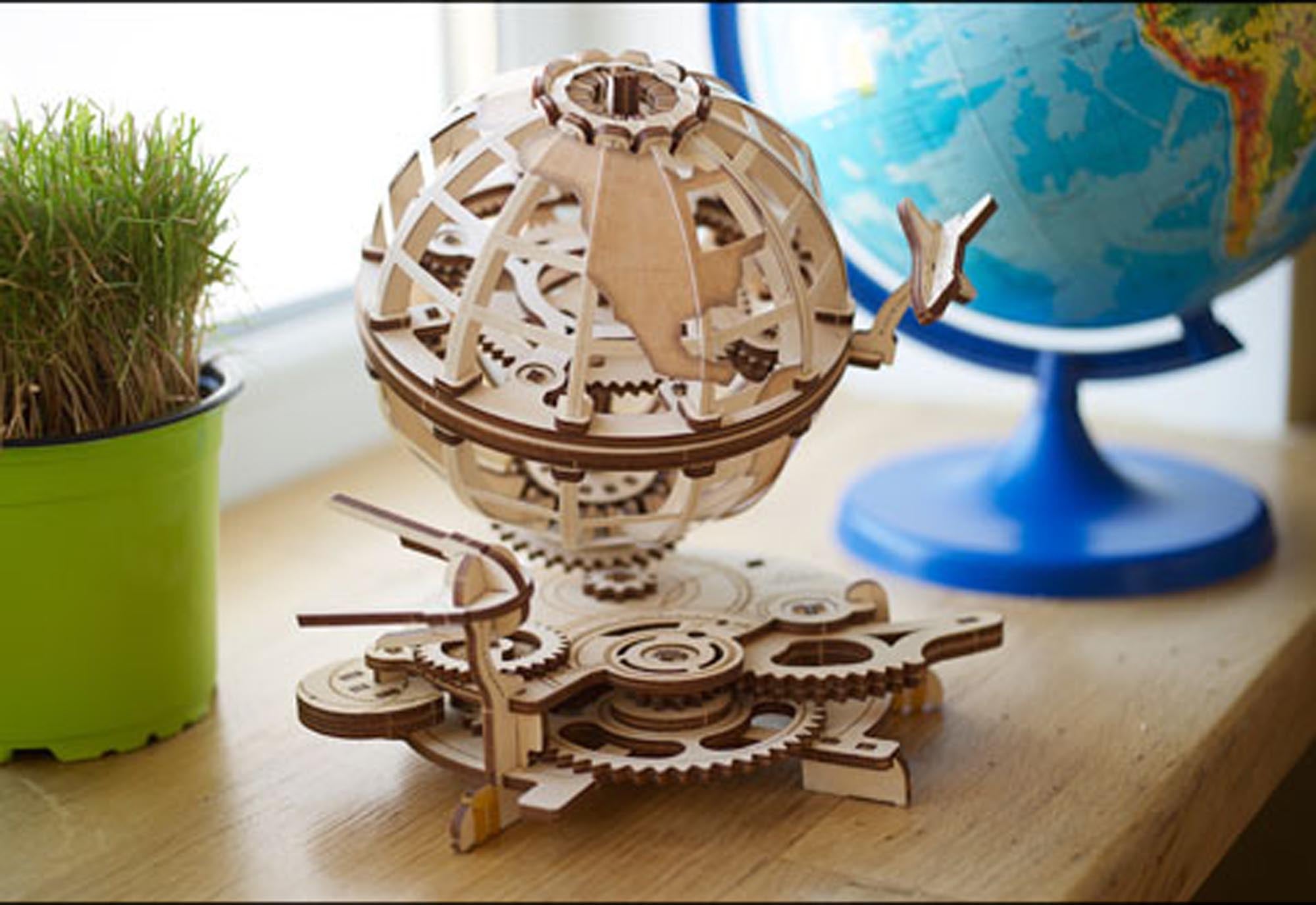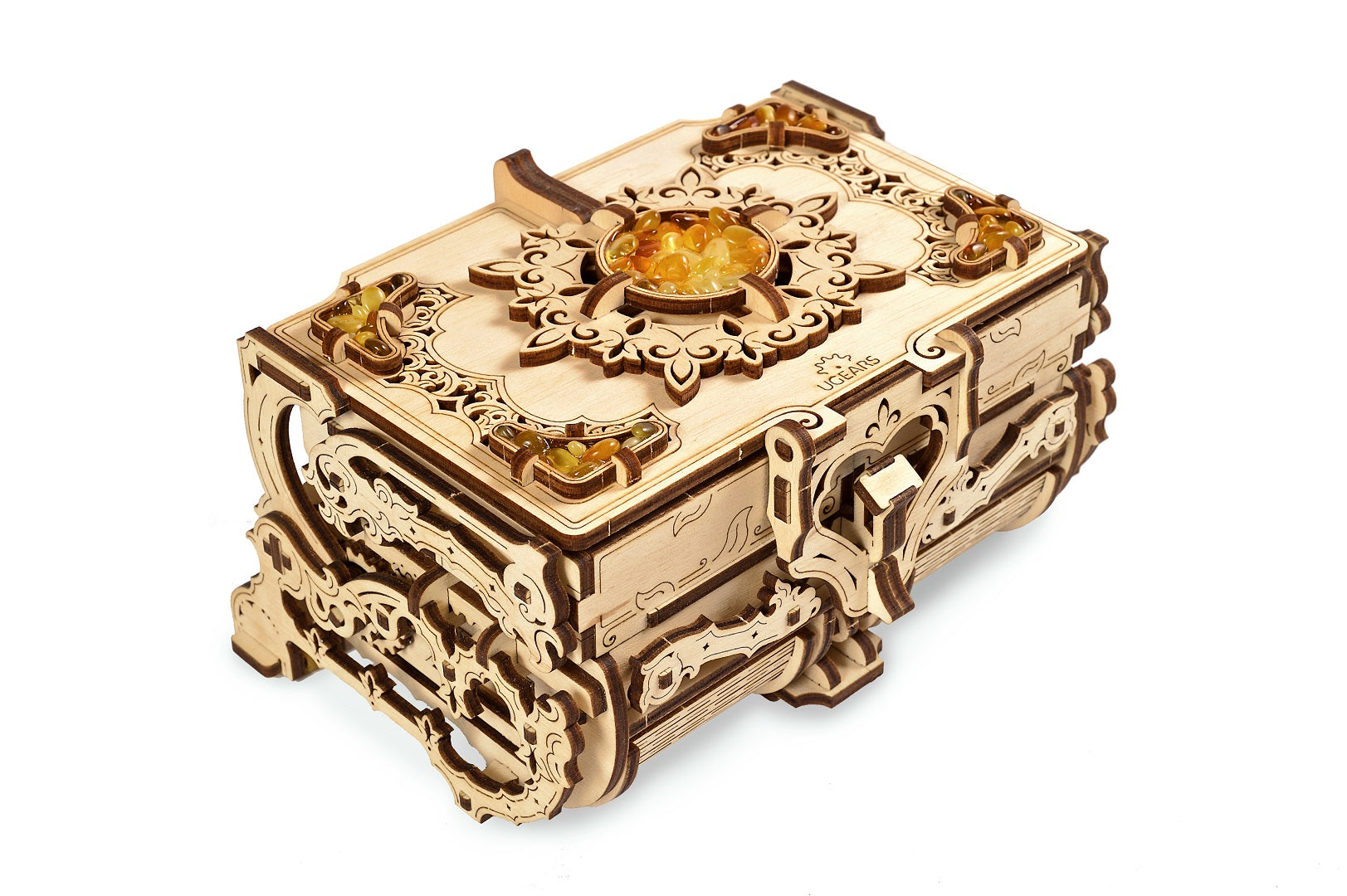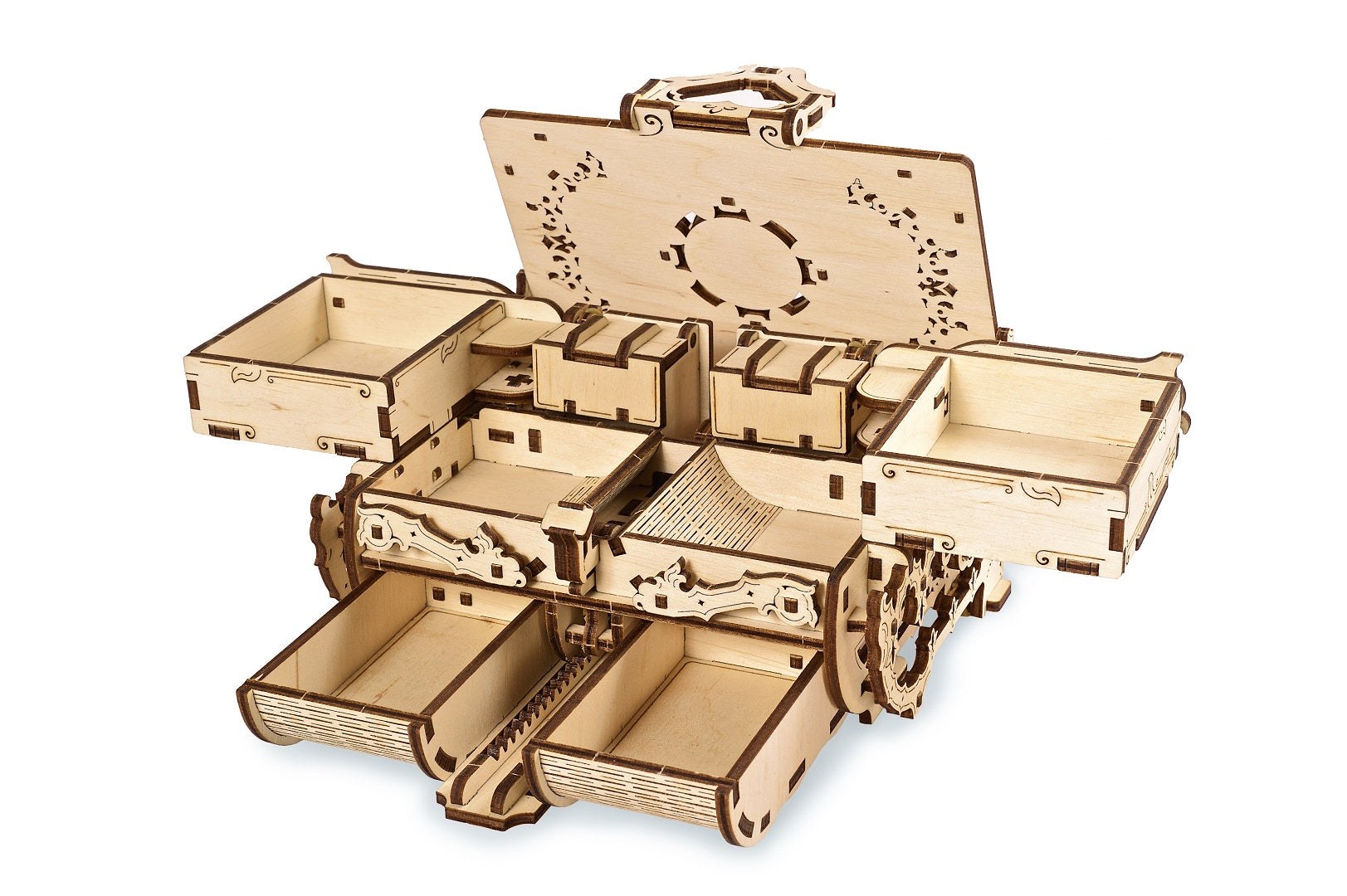UGEARS 3D puzzle kits are not just entertaining, they’re educational. Taking the latest in STEM and implementing it into our models, we help kids and adults of all ages learn how science, technology, engineering, and math work together in certain mechanisms. Our approach includes a hands-on, skills-based technique that doesn’t require additional tools or adhesives. What you get in the kit is all you need to create your project. Recommended Age: 8+
STEM LAB Kits
Each STEM LAB model kit is made of the finest quality wood and comes with easy-to-follow instructions. You won’t need to glue or cut, but the mechanisms will work and rotate as true machines when you’re finished. Kits include:
- Mechanical Random Number Generator - Random Generator is a device that generates random numbers - answers, based on probability theory.
- Curvimeter – A curvimeter is something that can measure the length of a curved line. Our Curvimeter model takes about two hours to complete, teaching you about measuring charts, schemes, maps, and more.
Whether you’re a teacher, a student, or just someone looking to have a little fun, the STEM LAB by UGEARS covers all the bases. By creating these with someone you love, you’ll cultivate relationships while getting that satisfactory feeling of building something with your own two hands.

